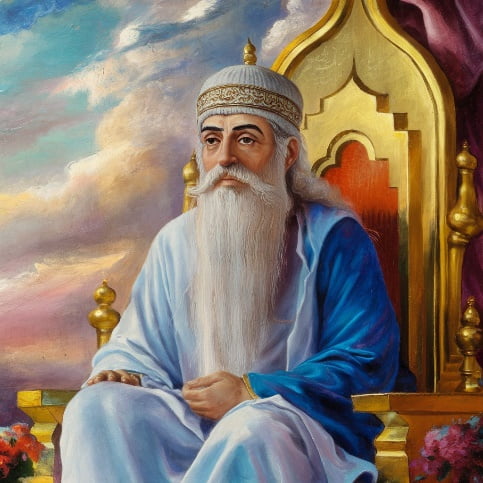By Prof. Levine & Dr. Salganik
Greetings,
Attitudes affect the way we perceive and respond to the world around us. Attitudes can influence our decisions, actions, preferences, and evaluations.
Attitudes are created through a complex interplay of various factors, including:
Socialization: Attitudes are often shaped during the socialization process, which occurs mainly in childhood and adolescence. Family members, peers, teachers, and significant others influence the development of attitudes through direct instruction, observation, and reinforcement.
Cognitive processes: Attitudes can be formed through cognitive processes such as reasoning, evaluation and judgment. People may develop attitudes based on beliefs, values, and interpretations of information.
Personal experiences: Personal experiences play a significant role in shaping attitudes. Positive or negative experiences with certain objects, people or situations can influence the formation of attitudes towards them.
Media and Communication: Mass media, including television, movies, the Internet, and social media platforms, can shape attitudes by exposing people to certain ideas, values, and perspectives.
Cultural and social influences: cultural norms, traditions and social expectations contribute to the formation of attitudes. People often adopt attitudes that are consistent with the values and beliefs of their culture or social group.
Emotional reactions: emotional reactions to stimuli can also affect the formation of attitudes. People may develop positive or negative attitudes based on their emotional responses to specific objects, people, or situations.
Personal characteristics: individual differences, such as personality traits, self-esteem, and cognitive abilities, can influence the formation of attitudes. For example, people with high levels of openness to experience may be more open to forming new attitudes, while those with low self-esteem may be more resistant to attitude change.
In general, attitudes are dynamic and can evolve over time in response to new information, experiences, and social influences. In addition, attitudes can vary in strength and stability, from fleeting opinions to deeply held beliefs.
Read more »
By Prof. Levine & Dr. Salganik
שלום רב
עמדות משפיעות על האופן שבו אנו תופסים ומגיבים לעולם הסובב אותנו. עמדות יכולות להשפיע על ההחלטות, הפעולות, ההעדפות וההערכות שלנו.
עמדות נוצרות באמצעות משחק גומלין מורכב של גורמים שונים, כולל:
סוציאליזציה: עמדות מעוצבות לעתים קרובות במהלך תהליך החיברות, המתרחש בעיקר בילדות ובגיל ההתבגרות. בני משפחה, עמיתים, מורים ואנשים משמעותיים אחרים משפיעים על התפתחות עמדות באמצעות הוראה ישירה, התבוננות וחיזוק.
תהליכים קוגניטיביים: עמדות יכולות להיווצר באמצעות תהליכים קוגנטיבים כגון הנמקה, הערכה ושיפוט. אנשים עשויים לפתח עמדות המבוססות על אמונות, ערכים ופרשנויות של מידע.
חוויות אישיות: חוויות אישיות משחקות תפקיד משמעותי בעיצוב עמדות. חוויות חיוביות או שליליות עם חפצים, אנשים או מצבים מסוימים יכולות להשפיע על היווצרות עמדות כלפיהם.
מדיה ותקשורת: תקשורת המונים, כולל טלוויזיה, סרטים, אינטרנט ופלטפורמות מדיה חברתית, יכולה לעצב עמדות על ידי חשיפת אנשים לרעיונות, ערכים ופרספקטיבות מסוימים.
השפעות תרבותיות וחברתיות: נורמות תרבותיות, מסורות וציפיות חברתיות תורמות להיווצרות עמדות. אנשים מאמצים לעתים קרובות עמדות העולות בקנה אחד עם הערכים והאמונות של תרבותם או של הקבוצה החברתית שלהם.
תגובות רגשיות: תגובות רגשיות לגירויים יכולות להשפיע גם על עיצוב עמדות. אנשים עשויים לפתח עמדות חיוביות או שליליות המבוססות על תגובותיהם הרגשיות לחפצים, אנשים או מצבים ספציפיים.
מאפיינים אישיים: הבדלים אישיים, כגון תכונות אישיות, הערכה עצמית ויכולות קוגניטיביות, יכולים להשפיע על היווצרות עמדות. לדוגמה, אנשים עם רמות גבוהות של פתיחות להתנסות עשויים להיות פתוחים יותר ליצירת עמדות חדשות, בעוד שאלו עם הערכה עצמית נמוכה עשויים להיות עמידים יותר לשינוי גישה.
באופן כללי, עמדות הן דינמיות ויכולות להתפתח עם הזמן בתגובה למידע חדש, חוויות והשפעות חברתיות. בנוסף, גישות יכולות להשתנות בחוזק וביציבות, החל מדעות חולפות ועד אמונות עמוקות.
Read more »
By Prof. Levine & Dr. Salganik
Hello to our readers,
The evolution of religion in human society is a complex and multifaceted phenomenon that has been studied by researchers from various disciplines including anthropology, sociology, psychology and history. Although it is challenging to trace exact origins and trace a linear progression, there are a few key stages and developments that can be seen in the evolution of religion [Written with the help of the GPT CHAT after we checked and made many edits and additions to the text]:
1. Animism and Shamanism: Animism is often considered one of the earliest forms of religious belief, where people attribute spiritual meaning to natural elements such as animals, plants, rivers and mountains. In animistic societies, there is a strong emphasis on the interconnectedness of all living things and the natural world.
Shamanism, which probably arose within animistic cultures, includes the belief in spiritual beings or forces and the practice of shamanic rituals by people who believe they have special powers to communicate with these spirits or to cross between the physical and spiritual realms.
2. Polytheism: Polytheistic religions developed as human societies became more complex and organized. These religions include multiple gods and goddesses, each associated with specific areas such as fertility, war, agriculture, or the arts.
Polytheistic belief systems often include complex mythologies and rituals aimed at propitiating or honoring various deities. Examples include the pantheon of ancient Egypt, Greece, Rome, Mesopotamia and the Norse gods of Scandinavia.
3. Monotheism: Monotheistic religions center around the worship of a single supreme god. This development represents a significant change from polytheism and is often associated with the emergence of ethical monotheism, which emphasizes moral codes and the relationship between humans and the divine.
Judaism, founded by the Hebrew people, is one of the earliest monotheistic religions, with the belief in Jehovah as the one true God. Christianity grew out of Judaism, when the teachings of Jesus Messiah emphasized monotheism and love for God and humanity. Islam, founded by the Prophet Muhammad in the 7th century AD, also promotes monotheism, where Allah is the only God.

AI-assisted visualization
4. Organized religion: As societies became more complex, religious practices became institutionalized, leading to the formation of organized religions with established hierarchies, priests, and religious laws. These institutions played crucial roles in shaping cultural identity, social norms and governance.
For example, in medieval Europe, the Catholic Church held significant power and influence over both religious and secular matters, and played a central role in the lives of individuals and communities. Similarly, in ancient India, Hinduism developed into an organized religion with complex rituals, caste systems, and philosophical schools.
5. Secularization and rationalization: The process of secularization refers to the decline in the influence of religion in public life and the rise of secular institutions and ideologies. This phenomenon gained momentum during the Enlightenment in Europe, when thinkers advocated reason, science and individual freedom over traditional religious authority.
Rationalism and scientific inquiry challenged religious dogma and superstitions, and led to the separation of religion from the state in many societies. However, religion continues to be a significant force in the lives of individuals and communities, and the relationship between religion and secularism remains complex and multifaceted.
6. Globalization and syncretism: Globalization has enabled the exchange of ideas, including religious beliefs and practices, which has led to increased syncretism [a process of settlement and unification between different faiths] and the merging of different religious traditions. This phenomenon is particularly noticeable in areas with diverse cultural and religious landscapes, where people combine elements from multiple religions in their religious practices.
Examples include the syncretic religions of the Caribbean, such as Voodoo and Santeria, which combine African, indigenous and Christian elements. Globalization has also led to the spread of the world's major religions to new regions, resulting in the adaptation and hybridization of religious traditions.


AI-assisted visualization
Read more »
By Prof. Levine & Dr. Salganik
שלום רב לקוראנו,
האבולוציה של הדת בחברה האנושית היא תופעה מורכבת ורבת פנים שנחקרה על ידי חוקרים מדיסציפלינות שונות כולל אנתרופולוגיה, סוציולוגיה, פסיכולוגיה והיסטוריה. למרות שזה מאתגר לאתר מקורות מדויקים ולהתחקות אחר התקדמות ליניארית, ישנם כמה שלבים והתפתחויות מרכזיים שניתן לראות באבולוציה של הדת [נכתב בעזרת GPT CHAT לאחר שבדקנו וידאנו ערכנו והוספנו רבות לטקסט]:
- אנימיזם ושאמאניזם: אנימיזם נחשב לעתים קרובות לאחת הצורות המוקדמות ביותר של אמונה דתית, שבה אנשים מייחסים משמעות רוחנית לאלמנטים טבעיים כגון בעלי חיים, צמחים, נהרות והרים. בחברות אנימיסטיות, יש דגש חזק על הקשר ההדדי של כל היצורים החיים והעולם הטבעי. שמאניזם, שככל הנראה צמח בתוך תרבויות אנימיסטיות, כולל את האמונה בישויות או כוחות רוחניים ואת התרגול של טקסים שמאניים על ידי אנשים שמאמינים שיש להם כוחות מיוחדים לתקשר עם רוחות אלה או לחצות בין הממלכות הפיזיות והרוחניות.
- פוליתאיזם: דתות פוליתיאיסטיות התפתחו ככל שהחברות האנושיות נעשו מורכבות ומאורגנות יותר. דתות אלה כוללות אלים ואלות מרובים, שכל אחד מהם קשור לתחומים ספציפיים כגון פוריות, מלחמה, חקלאות או אומנות. מערכות אמונה פוליתיאיסטיות כוללות לעתים קרובות מיתולוגיות וטקסים מורכבים שמטרתם לפייס או לכבד אלוהויות שונות. דוגמאות לכך כוללות את הפנתיאון של מצרים העתיקה, יוון, רומא, מסופוטמיה והאלים הנורדים של סקנדינביה.
- מונותאיזם: הדתות המונותאיסטיות מתרכזות סביב סגידה לאל עליון יחיד. התפתחות זו מייצגת שינוי משמעותי מהפוליתאיזם וקשורה לעיתים קרובות להופעתו של המונותיאיזם האתי, המדגיש קודים מוסריים ואת היחסים בין בני האדם לאלוהי. היהדות, שנוסדה על ידי העם העברי, היא אחת הדתות המונותאיסטיות המוקדמות ביותר, עם האמונה ביהוה כאל האמיתי האחד. הנצרות צמחה מתוך היהדות, כאשר תורתו של ישוע המשיח הדגישה את המונותיאיזם ואת האהבה לאלוהים ולאנושות. האסלאם, שנוסד על ידי הנביא מוחמד במאה ה-7 לספירה, מקדם גם הוא מונותאיזם, כאשר אללה הוא האל היחיד.


הדמיה בעזרת AI
Read more »
By Prof. Levine & Dr. Salganik
Greetings,
We will first distinguish between civilization on the one hand and empires and states on the other. According to Samuel Huntington [author of the book "The Clash of Civilizations,"] "Civilization is the broadest cultural entity. Civilization is the highest degree of human identity that distinguishes different groups of people. As history shows us, he believes, civilizations are "a superpower "In history that survives the many upheavals that cultures, peoples and countries can go through – ideological, behavioral, governmental, etc. Civilizations differ from each other in their basic values and basic views and assumptions in a variety of questions and ideas [see Wikipedia].
An empire, on the other hand, is defined as a political sovereignty, for example a state, which controls large areas inhabited by populations that differ ethnically and culturally from its ruling center [see Wikipedia]
In this blog we will discuss the rise and especially the fall of empires and states and we will also try to examine this through the lens of the board of internalized figures in the individual building his social self and the dominant figures in this board.

Let's first mention, as in any conversation, the model we propose for "self". First we note that in our model the self includes most of the components of the human soul. The model distinguishes between the "primary self", or the "initial self" which is in fact the basic biological nucleus consisting of a number of innate structures and subject to increasing development during life, this self includes the emotional and cognitive instinctive parts of the person. The exact structure of the primary self and the relationship between its parts still requires clarification [see previous conversations].
The primary self is using the memory stores and abilities of cognition, emotion and more. On another hand, "social self" [consisting of "secondary selves"] is being built during the whole life, and represents an epistructure that develops during the exposure of the person for social influence, and consists of the internalization of figures significant to the person, originating from external groups or even imaginary groups (related, for example, to a story, myth, film, etc.) that greatly influenced the person. It is possible that it can also include the personification of objects and agencies that are extremely important to a person.
Read more »
By Prof. Levine & Dr. Salganik
שלום רב
נבחין תחילה בין ציווילזציה מחד ואימפריות ומדינות מאידך. על-פי סמואל הנטינגטון [מחבר הספר "התנגשות הציוויליזציות",] "ציוויליזציה היא הישות התרבותית הרחבה ביותר. ציוויליזציה היא דרגת הזהות הגבוהה ביותר של האדם המבדילה בין קבוצות שונות של בני אדם. כפי שההיסטוריה מראה לנו הוא סבור ,ציוויליזציות הן "כוח על" בהיסטוריה ששורד את שלל המהפכים שתרבויות, עמים ומדינות יכולים לעבור – אידאולוגיים, התנהגותיים, שלטוניים וכו'. ציוויליזציות נבדלות זו מזו בערכיהן הבסיסיים ובהשקפותיהן הבסיסיות והנחות היסוד במגוון שאלות ורעיונות [ראה ויקיפדיה].
אימפריה או קיסרות מאידך מוגדרת כריבונות פוליטית, למשל מדינה, השולטת על שטחים נרחבים בהם מתגוררות אוכלוסיות השונות מבחינה אתנית ותרבותית ממרכזה השלטוני [ראה ויקיפדיה]
בבלוג זה נדון בעלייתן ובעיקר בנפילתן של אימפריות ומדינות וננסה גם לבחון זאת דרך העדשה של דירקטוריון הדמויות המופנמות אצל היחיד הבונה את האני החברתי שלו והדמויות הדומיננטיות בדירקטוריון זה.

נזכיר תחילה כבכל שיחה את המודל שאנו מציעים ל"עצמי" או . ראשית נציין כי במודל שלנו העצמי כולל את רוב מרכיבי נפשו של האדם. המודל מבחין בין "העצמי הראשוני", או "האני הראשוני" שהוא למעשה הגרעין הביולוגי הבסיסי המורכב ממספר מבנים מולדים ונתון להתפתחות הולכת וגדלה במהלך החיים, עצמי זה כולל את החלקים היצריים הרגשיים והקוגניטיביים של האדם. המבנה המדויק של האני הראשוני והקשר בין חלקיו דורש עדיין בירור [ראה שיחות קודמות]..
על רקע ומעל [כמטפורה] האני הראשוני תוך שימוש במאגרי ויכולות הזיכרון הקוגניציה הרגש ועוד שלו הולך ונבנה במהלך החיים מבנה על של "העצמי החברתי" או ה"אני החברתי" [המורכב מ"עצמיים משניים"], שהוא מבנה המתפתח במהלך חשיפתו של האדם להשפעה חברתית, ומורכב מהפנמה של דמויות משמעותיות לאדם, שמקורן בקבוצות חיצוניות או אף קבוצות דמיוניות (הקשורות, למשל, לסיפור, מיתוס, סרט וכו' ) שהשפיעו מאוד על האדם. יתכן שאני חברתי זה יכול לכלול גם האנשה לדמויות של חפצים ואמצעים בעלי חשיבות יתרה לאדם.
Read more »
 Prof. Joseph Levine, M.D. is an emeritus associate professor in the Division of Psychiatry, Faculty of Health Sciences, Ben Gurion University in Israel. Prof. Levine is a certified psychiatrist with clinical experience in controlled trials of adult psychiatric disorders and in psychotherapy. He was awarded a NRSAD independent investigator grant for the study of Creatine Monohydrate in psychiatric disorders -- mainly Schizophrenia. He resides and treats patients in Tel Aviv and all of central Israel.
Prof. Joseph Levine, M.D. is an emeritus associate professor in the Division of Psychiatry, Faculty of Health Sciences, Ben Gurion University in Israel. Prof. Levine is a certified psychiatrist with clinical experience in controlled trials of adult psychiatric disorders and in psychotherapy. He was awarded a NRSAD independent investigator grant for the study of Creatine Monohydrate in psychiatric disorders -- mainly Schizophrenia. He resides and treats patients in Tel Aviv and all of central Israel.






